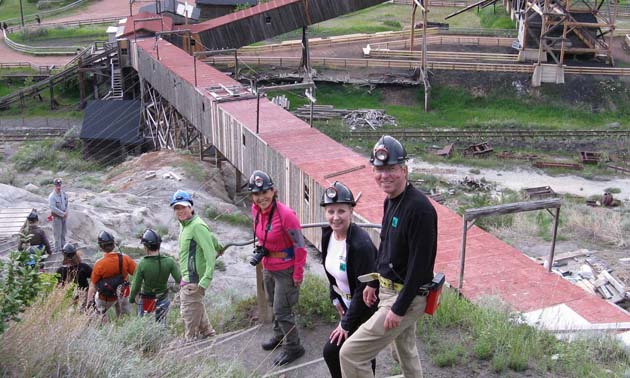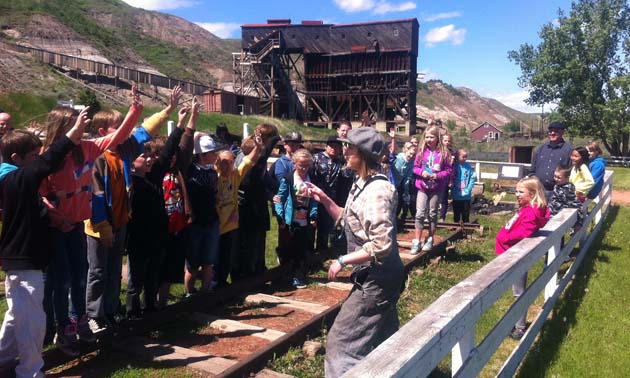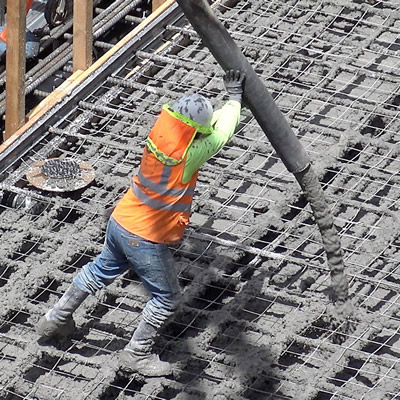7 must-visit museums on the Prairies to learn about Canada’s mining and energy industries
Brush up on your mining history with a visit to one of these interactive mines and museums across Western Canada.

Atlas Coal Mine encompasses 70 acres and 20 dozen preserved buildings. — Photo: Atlas Coal Mine
Atlas Coal Mine—Drumheller, Alberta
A trip to the Atlas Coal Mine is a trip back in time, when coal was the reigning king in North America. “This mine is integral to the energy industry and overall growth of Canada,” said Jay Russell, executive director at the Atlas Coal Mine Historical Society. “The Atlas Coal Mine National Historic Site is the most complete history of coal mining in Canada.” This museum was once a fully functioning coal mine that accounted for 10 per cent of Drumheller Valley’s total 60 million tons of coal. It’s been a museum since 1989, and a National Historic Site since 2002. “We have everything. We have all of the historic structures left over,” said Russell.
One of the most impressive features of the Atlas Coal Mine is its genuinely preserved structures. “These are original structures,” said Russell. “We have Canada’s only wooden tipple standing here at the site. We believe we have the most complete coal mine blacksmith shop in the Commonwealth. We have in our collection some of the very last of certain kinds of mining equipment on the continent.” These original pieces add to the overall experience of a day at Atlas. “There’s parts of this mine where you walk and you know that object or that artifact was left by a coal miner 40, 50, 60, 70 years ago. He left it there assuming there would be another shift, and it would be picked up the next day,” said Russell. These true glimpses into the mine’s past are "one thing I really love about the site.”
The Atlas Coal Mine and the Drumheller Valley were vital in the development of Western Canada in the 20th century. “Drumheller coal was used to fuel the development of Western Canada,” said Russell. “Before oil and gas was king, coal was king. Drumheller was the crown jewel in king coal.” Drumheller coal was the ideal domestic fuel. It was used to heat houses, cook food, fuel trains and produce electricity. “It went all the way to Thunder Bay, Toronto, Ottawa, and of course all the way to the West Coast.”
Coal’s reign as king came to an end bringing the mass closure of mines in Drumheller Valley. “The Atlas mine is actually a survivor,” said Russell. “It was a really lucky mine in that there was a total of 139 coal mines in what is now the boundaries of Drumheller Valley.” These mines were all within a span of 40 kilometres. “Atlas was the very last one to operate. It was the only one to survive the '60's, and carried on to 1979.” The last box car left in 1979. When Atlas closed, oil was the new king.
Russell credits Drumheller Valley with Western Canada’s success. “Before oil was king, that prosperity that Western Canada takes for granted may never have happened. If it did happen, it would have been greatly delayed. We needed that coal to do all of the things that Canada needed to do at that time.” The coal from Drumheller kept Western Canada warm.

Emily guides kids through a train tour at Atlas Coal Mine. — Photo: Atlas Coal Mine
Now, Atlas Coal Mine is 70 acres and two dozen buildings that show visitors how Alberta’s energy industry was born. Machinery, artifacts and archives complement the guided tour—under and above ground. Visitors will see the towering wooden tipple, and the pre-1936 restored battery-operated mine train. What sets Atlas apart from other museums is the people who guide the tours. One man in particular is a fifth-generation coal miner who actually worked at Atlas in its glory days. The Atlas museum still collects oral histories culled from his stories.
The Atlas Coal Mine is open to the public May through October. Private off-season tours are available for 10 persons or more.
Bellevue Underground Mine, Crowsnest Pass, Alberta
The Bellevue Underground Mine showcases the life of a coal miner in Western Canada. This mine produced over 13 million tons of coal in its 60-year lifespan before closing in the 1960s. A miner’s job was dangerous. Explosions, cave-ins and afterdamp poisoning were far too common. The mine’s decline was quick as oil took control of the energy industry of Canada. Now, underground tours operate at the Bellevue Underground Mine.
Leduc No. 1 Energy Discovery Centre, Leduc, Alberta
Leduc No. 1 shows Canadians how Alberta joined the oil game in 1947. The discovery of “black gold” changed the province forever and Leduc it is credited as the birthplace of the modern oil industry. The drill hole that is now Leduc No. 1 represents the last chance from Imperial Oil to find crude oil in the area. Inside, the Energy Discovery Centre features a virtual tour beneath the Earth’s surface, recreating how oil was found. There are informative displays on the history of the site and the different oil extraction processes. Outside, visitors will see equipment commonly found on oil patches during a walking tour.
Canmore Museum and Geoscience Centre, Canmore, Alberta
The Canmore Museum and Geoscience Centre tells the stories of the mountains that surround this beautiful Albertan town. The exhibit “From Coal to Community” showcases the mining industry around this small mountain town. While the focus is on coal mining, this exhibit uses interactive and multi-media displays to tell the history of the town and its people and the influence of the area’s industries on the town’s growth. The museum hosts the annual Miner’s Day commemorating the last working day of the coal mines in Canmore: July 13, 1979.
Robert B. Ferguson Museum of Mineralogy, Winnipeg, Manitoba
The Museum of Mineralogy celebrates geology in Canada. It houses more than 7,500 mineral samples that have been curated for the past 100 years by the Department of Geological Sciences at the University of Manitoba. The study of minerals is important to the energy industry in Canada because minerals are found in the layers of materials found at and below the Earth’s surface.
Lynn Lake Mining Town Museum, Lynn Lake, Manitoba
Lynn Lake is the northernmost community in Manitoba that is accessible by road. This remote location has been found rich in nickel, copper, gold, uranium and zinc reserves over the years. Its abundance of resources is complemented by the town’s natural beauty and colourful history. The town was originally founded 120 miles south of its current location. Upon the discovery of resources, and the realization that it would be less expensive to actually move the town’s existing buildings than reconstruct from scratch, the modern Lynn Lake was created. The Lynn Lake Mining Museum tells the story of the town, its relocation and its role in Canada’s mining industry.
Saskatchewan Potash Interpretive Centre, Esterhazy, Saskatchewan
A trip to Esterhazy, Saskatchewan, mandates a stop at the Potash Interpretive Centre. The centre walks visitors through the evolution of the potash industry. The exhibits begin at the early stages of mechanical mining, and move through time to the current robotic mining techniques. The goal of the Potash Interpretive Centre is to teach visitors the importance of potash to Saskatchewan’s job market and economy, as well as the type of work environment miners experience.




